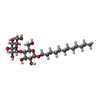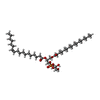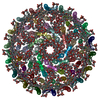+Search query
-Structure paper
| Title | A distinct double-ring LH1-LH2 photocomplex from an extremophilic phototroph. |
|---|---|
| Journal, issue, pages | Nat Commun, Vol. 16, Issue 1, Page 1410, Year 2025 |
| Publish date | Feb 6, 2025 |
 Authors Authors | Kazutoshi Tani / Kenji V P Nagashima / Risa Kojima / Masaharu Kondo / Ryo Kanno / Issei Satoh / Mai Kawakami / Naho Hiwatashi / Kazuna Nakata / Sakiko Nagashima / Kazuhito Inoue / Yugo Isawa / Ryoga Morishita / Shinichi Takaichi / Endang R Purba / Malgorzata Hall / Long-Jiang Yu / Michael T Madigan / Akira Mizoguchi / Bruno M Humbel / Yukihiro Kimura / Yutaka Nagasawa / Takehisa Dewa / Zheng-Yu Wang-Otomo /    |
| PubMed Abstract | Halorhodospira (Hlr.) halophila strain BN9622 is an extremely halophilic and alkaliphilic phototrophic purple sulfur bacterium isolated from a hypersaline lake in the Libyan Desert whose total ...Halorhodospira (Hlr.) halophila strain BN9622 is an extremely halophilic and alkaliphilic phototrophic purple sulfur bacterium isolated from a hypersaline lake in the Libyan Desert whose total salinity exceeded 35% at pH 10.7. Here we present a cryo-EM structure of the native LH1-LH2 co-complex from strain BN9622 at 2.22 Å resolution. Surprisingly, the LH1-LH2 co-complex consists of a double-ring cylindrical structure with the larger LH1 ring encircling a smaller LH2 ring. The Hlr. halophila LH1 contains 18 αβ-subunits and additional bacteriochlorophyll a (BChl a) molecules that absorb maximally at 797 nm. The LH2 ring is composed of 9 αβ-subunits, and the BChl a molecules in the co-complex form extensive intra- and inter-complex networks to allow near 100% efficiency of energy transfer to its surrounding LH1. The additional LH1-B797 BChls a are located in such a manner that they facilitate exciton transfer from monomeric BChls in LH2 to the dimeric BChls in LH1. The structural features of the strain BN9622 LH1-LH2 co-complex may have evolved to allow a minimal LH2 complex to maximize excitation transfer to the core complex and effectively harvest light in the physiologically demanding ecological niche of this purple bacterium. |
 External links External links |  Nat Commun / Nat Commun /  PubMed:39915441 / PubMed:39915441 /  PubMed Central PubMed Central |
| Methods | EM (single particle) |
| Resolution | 2.2 Å |
| Structure data | EMDB-39835, PDB-8z81: |
| Chemicals |  ChemComp-BCL:  ChemComp-LMT:  ChemComp-CRT:  ChemComp-PGV: |
| Source |
|
 Keywords Keywords | PHOTOSYNTHESIS / LH2-LH1 COMPLEX |
 Movie
Movie Controller
Controller Structure viewers
Structure viewers About Yorodumi Papers
About Yorodumi Papers





 halorhodospira halophila (bacteria)
halorhodospira halophila (bacteria)